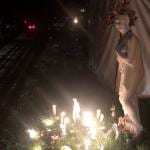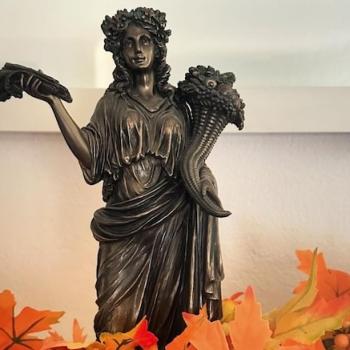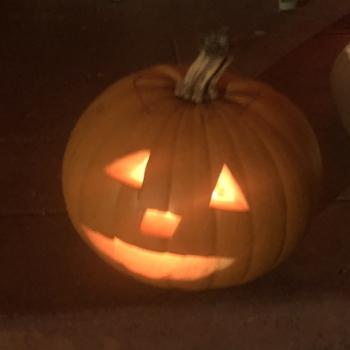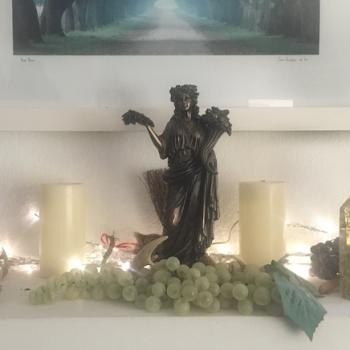Samhain was originally an ancient Irish-Celtic holiday, but we know very little about how it was celebrated thousands of years ago. What we do know is that how it is celebrated today is radically different. Long ago, there were no glowing vegetables, trick-or-treating, Witches, or visits from the dead. Most of the trappings we associate with Samhain date only from the Christian era, though that doesn’t make any of them less real or witchy.
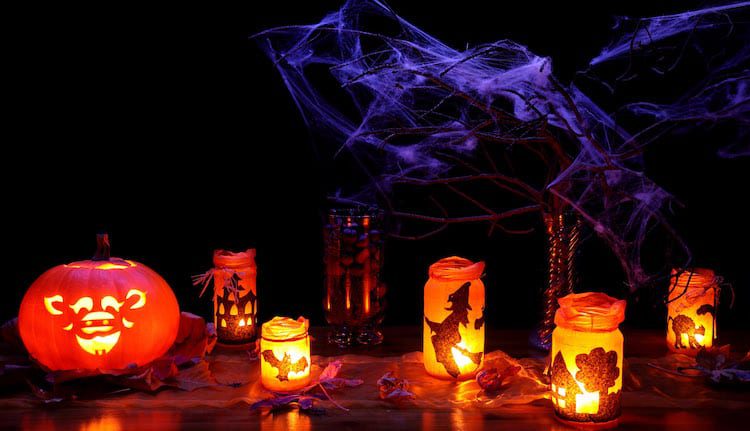
The holiday of Samhain shows up with some frequency in Irish mythology. In myth, Samhain was generally a time of high magick. Enchanted gifts were given to kings that night, and just as often, magickal items were stolen from those kings. Heroes died or met destinies influenced by magick, and sometimes monstrous beings attacked castles and keeps. The supernatural features prominently in myths that name-drop Samhain, and sometimes that magickal influence could even be positive. Samhain was often a rather amorous time thanks to the use of love spells and other enchantments. (1)
There are also mundane goings-on in Samhain mythology that shed light on how the holiday might have been celebrated. It was apparently a time for the making of laws, as tribal assemblies were said to meet on the holiday.(2) From this, it’s possible to infer that there might have been a lot of food consumed at Samhain, making it perhaps something of a harvest festival. The trappings of Halloween have always been related to the harvest, making this even more likely.
What’s probably most important about ancient Samhain is the feeling of dread it brought to most people. It was a holiday to be feared, not embraced. Bonfires would have been built to keep malevolent fairies at bay. There’s nothing in the historical record suggesting that ancient Samhain had anything to do with the dead, though the dividing line between humans and fey was indeed very thin that night.
The modern celebration of Halloween most likely has something to do with the Irish-Celtic celebration of Samhain, though just how much will never be known with certainty. Many people believe that the Catholic holidays of All Saints’ Day (Nov. 1) and All Souls’ Day (Nov. 2) are related to the original celebration of Samhain, though this is historically problematic. Both holidays were established centuries before Ireland converted to Christianity and were originally celebrated in the spring, before being moved in the eighth century. (This is about a hundred years after Ireland and the rest of the British Isles had effectively been “Christianized.”) (3)
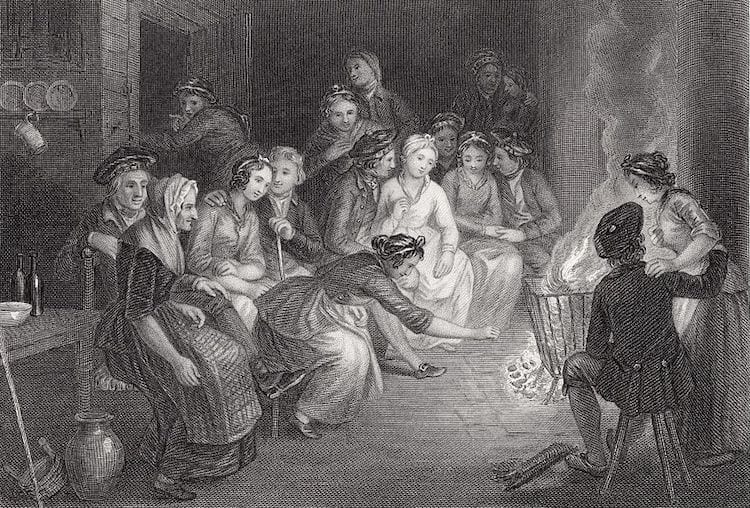
For Witches, the person most responsible for connecting Samhain with the dead is the English anthropologist Sir James Frazer. In his multivolume work The Golden Bough, Frazer wrote of “the souls of the departed hovering unseen” over ancient celebrations, an inference reached due to Samhain’s proximity to All Souls’ Day. (Alas, Fraser had it backward.) Frazer’s interpretation of Samhain comes across more as Halloween than an ancient Irish-Celtic festival. In his writings, he also makes mention of “Witches … sweeping through the air on besoms, others galloping along the roads on tabby-cats, which for that evening are turned into coal-black steeds. The fairies, too, are all let loose, and hobgoblins of every sort roam freely about.” (4) Frazer was certainly onto something long before the first Modern Witches would add Samhain to their calendars!
The placement of All Souls’ Day and All Saints’ Day at the start of November is not an accident. There’s just something about late October/early November that brings us closer to those we have lost. Mexico’s Day of the Dead is celebrated from October 31 to November 2, and its origins predate the arrival of Christianity. While the Irish-Celts may not have celebrated Samhain as a festival involving the dead, it most certainly feels appropriate to us.
Divination was a popular pasttime at Halloween celebrations beginning in at least the seventeenth century in England, and might have been the most popular one. Games like bobbing for apples were originally designed to reveal a young person’s true love. For those who wanted to avoid getting wet, it was said that slicing an apple and eating the slices at midnight would result in the image of a future lover being revealed in a mirror. No apples? Throw some nuts into a fire instead and look into the flames, and maybe you’ll see who you’re destined to marry.(5)
Knowing how the ancient Celts might have celebrated Samhain can inform our own rituals and rites, but what’s most important is what Samhain means to us today as Witches. We know that it’s the time of year when the veil between the worlds is thin because we can feel it! Since the beginning of the Modern Witchcraft revival, Samhain has held a place of high importance in the rites of Witches.
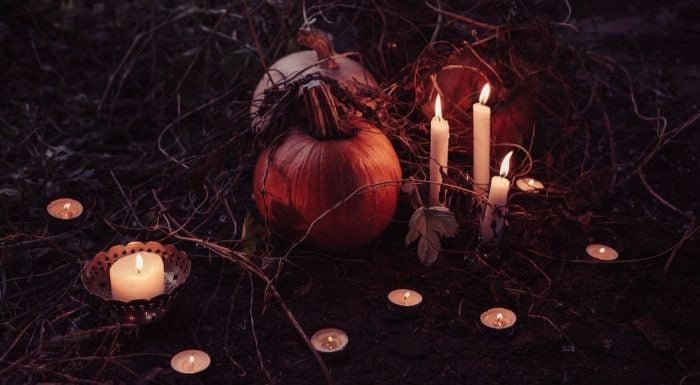
Ways to Celebrate Samhain
Samhain is essentially a harvest celebration, though it’s rarely celebrated that way anymore. Rituals featuring apples, pumpkins, sunflowers, squash, and pomegranates work well at Samhain, and even when these foods aren’t specifically used in ritual, they often decorate altars and shrines. I’ve always found it funny that many Christian groups like to host “harvest parties” instead of Halloween ones, since both types of parties have Witch and Pagan overtones.
Rituals involving the sacrificial god are not all that common at Samhain, but the energy of the season makes this type of ritual especially powerful. In October, death is in the air, and it’s an easy time of year to get swept up in the drama involving a dying deity. The death of the sacrificial god might also serve as a window in which to mourn the deaths of loved ones.
For many Witches, Samhain is a celebration of the new year, and a Samhain ritual might open with an activity designed to initiate a fresh start or to burn away unwanted things from the past year. (If your ritual is outside, some sort of fire will help you connect to our distant ancestors who celebrated Samhain all those centuries ago.) Even when my Samhain rituals don’t include specific activities commemorating a new turn of the wheel, I’ll often use language that refers to it, since so many Witches expect it at this time of year.
The myth of Demeter and Persephone remains a popular one among many Witches, and a ritual detailing the descent of Persephone into the Underworld is appropriate at Samhain. When this story is combined with the pain of Persephone’s mother, Demeter, and the wisdom of the goddess Hecate, it can become a multifaceted ritual that touches upon a variety of emotions and magickal themes. Other goddesses often honored at Samhain include the Morrigan, Freya, and Santa Muerte. Before honoring any deity at Samhain, be sure that you or someone in your coven has a personal relationship with them first.
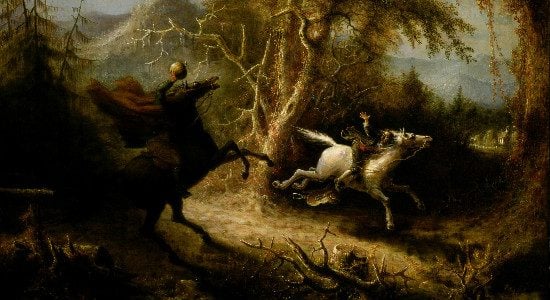
The idea of reuniting with deceased loved ones is the most common theme at Samhain, and makes Samhain unique among all the other sabbats. I’ve found that this type of working generally ends up incorporating everything else commonly found at Samhain. My wife often works with Persephone at Samhain, and the sacrificed Harvest Lord has now become the Lord of Death and Rebirth. Our ritual space is usually decorated with jack-o’-lanterns and pomegranates, and we usually mention the turning of the wheel toward a new cycle. At public Samhain rituals, I’ve found that many people are disappointed if the ritual neglects to include some sort of acknowledgment of those who have gone before.
Divination is a powerful Samhain activity, and many of the games we associate today with Halloween, such as bobbing for apples, were originally forms of divination. It’s something probably best suited for solitary rites, or perhaps before or after coven rituals, but it’s not something that should be overlooked. Take advantage of the powerful energies flowing through the world in late October/early November and get a sneak peek at what the new year has in store.
While we’ll never quite know for sure just how much of the modern celebration of Halloween was a part of ancient Samhain practices, the trappings and customs associated with the holiday today are welcome in nearly all Samhain circles. The most popular symbol of Halloween is the Witch on her broomstick, and while the caricature isn’t always the most flattering, it’s still about us. Samhain rituals that utilize dressing up, trick- or-treating, and everything else associated with the secular Halloween are fair game for Witches.
—————
For More About Samhain and Other Sabbats . . . .
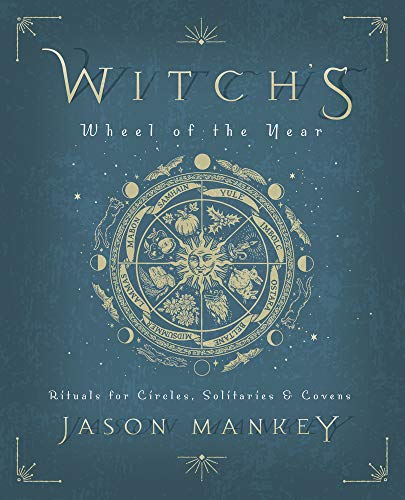
1. Hutton, Ronald The Pagan Religions of the Ancient British Isles, Blackwood Publishers, 1991/1993, page 177
2. Hutton, The Pagan Religions of the Ancient British Isles, 177.
3. Hutton, The Pagan Religions of the Ancient British Isles, 280.
4. Frazer, James The Golden Bough, Avenel Books, 1981 edition, 634.
5. Skal, David J., Death Makes a Holiday: A Cultural History of Halloween, Bloomsbury Publishing, 2002, pages 31–32
(Excerpted and adapted from The Witch’s Wheel of the Year: Rituals for Circles, Solitaries, and Covens, copyright 2019 Jason Mankey.)



